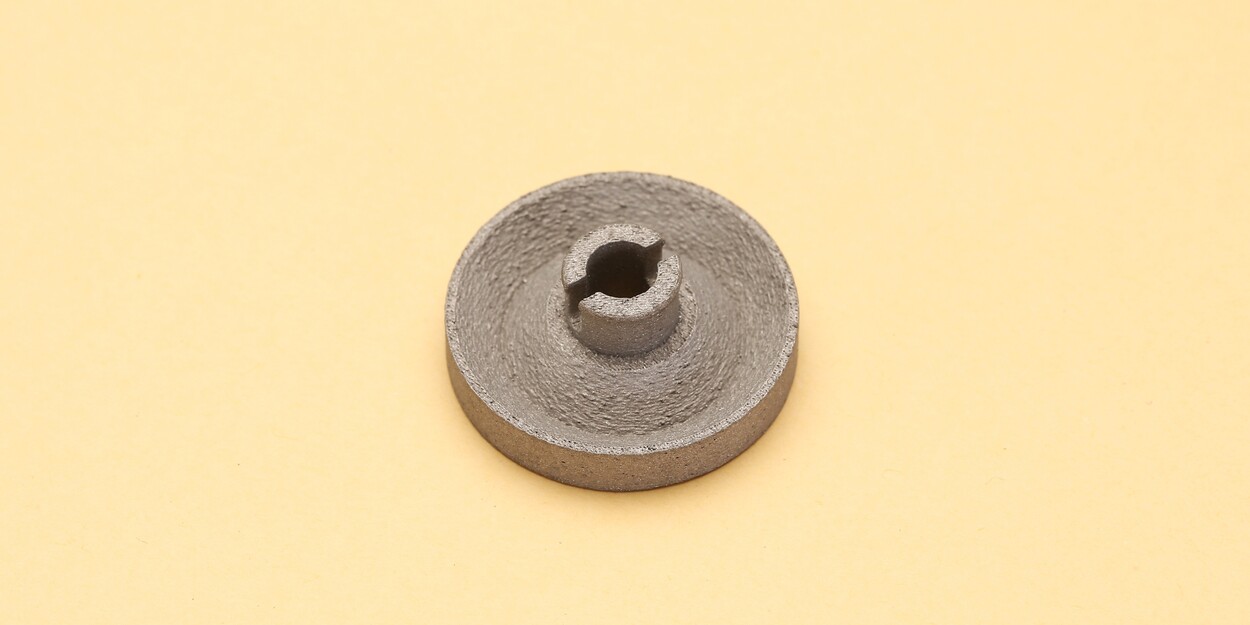Banner Image Courtesy of Hi3DP
What is Inconel?
Inconel is a family of nickel-chromium-based superalloys engineered to perform under extreme conditions. Unlike conventional metals, Inconel maintains its strength and stability even when exposed to high heat, corrosive chemicals, and mechanical stress.
The name “Inconel” covers several grades, but two types of Inconel dominate in metal 3D printing:
• Inconel 625: Known for its outstanding corrosion resistance and weldability, often used in marine and chemical processing environments.
• Inconel 718: A precipitation-hardened alloy with exceptional tensile strength, fatigue resistance, and creep resistance, making it a staple in aerospace and energy applications.
Advantages of Using 3D Printed Inconel
Machining Inconel with traditional methods is challenging due to its toughness and tendency to harden during cutting. Metal 3D printing provides a breakthrough and a solution.
Key Advantages of 3D Printing Inconel
• High-Temperature Design Freedom: Inconel retains strength above 700°C. With 3D printing, engineers can design lightweight turbine blades, exhaust manifolds, and combustion chambers with internal cooling channels that would be impossible to machine.
• Corrosion-Resistant Complex Parts: Inconel’s resistance to seawater, acids, and oxidizing environments makes it ideal for oil & gas drilling tools, marine components, and chemical processing equipment, all of which benefit from 3D printed geometries that extend service life.
• Fatigue-Resistant Lightweight Structures: Metal 3D printing enables lattice structures and topology-optimized parts. Inconel’s fatigue resistance ensures these lightweight designs still endure cyclic stresses in aerospace and automotive applications.
• Reduced Assembly Through Consolidation: Inconel components that once required multiple welded or bolted parts can be consolidated into a single 3D printed piece, reducing weak points and improving reliability in mission-critical systems.
• Rapid Iteration for Extreme Applications: Traditional machining of Inconel is slow and costly. 3D printing allows faster prototyping and iteration of high-performance parts, accelerating innovation in the aerospace and energy sectors.
Hi3DP’s SLM 3D Printing Service
Hi3DP offers Selective Laser Melting (SLM) services for high-performance alloys, Inconel 718. Our advanced SLM printing service ensures:
• High-density, high-quality parts
• Excellent mechanical properties
• Aerospace-grade precision and repeatability
Properties of Inconel in 3D Printing
When processed through metal 3D printing, Inconel retains its hallmark properties while benefiting from design flexibility.
Mechanical Properties
• High tensile and yield strength
• Excellent fatigue and creep resistance
• Maintains integrity under cyclic loading
Thermal Properties
• Stability at temperatures exceeding 700°C
• Resistance to oxidation and scaling
• Suitable for high-heat environments like turbines and exhaust systems
Chemical Properties
• Exceptional corrosion resistance in seawater, acids, and oxidizing environments
• Resistant to chloride-ion stress corrosion cracking
Quick Comparison with Stainless Steel and Titanium
|
Property |
Inconel 718 |
Stainless Steel (316L) |
Titanium Alloy (Ti-6Al-4V) |
|
Max Service Temp |
~700°C |
~500°C |
~600°C |
|
Corrosion Resistance |
Excellent |
Good |
Moderate |
|
Strength-to-Weight |
High |
Moderate |
Very High |
Properties of SLM 3D Printed Inconel 718 at Hi3DP
|
Dense Properties |
Metric |
Method |
|
Relative Density |
96.4% |
ASTM B923 |
|
Mechanical Properties |
Metric |
Method |
|
Tensile Strength |
1230MPa |
ASTM E8 |
|
Yield Strength |
1050MPa |
ASTM E8 |
|
Elongation at Break |
13% |
ASTM E8 |
|
Tensile Modulus |
170GPa |
ASTM E8 |
|
Hardness |
38 HRC |
ASTM E18 |
|
Other Properties |
Metric |
Method |
|
Corrosion |
PASS |
ASTM F1089 |
Applications of Inconel 3D Printing
Because of its unique performance, Inconel is widely used in mission-critical industries:
1. Aerospace: Turbine blades, combustion chambers, rocket engine parts, and exhaust systems.
2. Automotive: Turbocharger housings, high-performance exhaust manifolds, and motorsport components.
3. Energy Sector: Gas turbines, nuclear reactor components, oil & gas drilling tools, and heat exchangers.
4. Medical: Surgical instruments and implants requiring high strength and corrosion resistance.
5. Marine: Components exposed to seawater and harsh chemical environments.
These applications highlight Inconel’s role in enabling lighter, stronger, and more durable components that can withstand extreme environments.
Considerations
While Inconel 3D printing offers clear advantages, there are important factors to weigh:
1. Cost: Inconel powder is significantly more expensive than aluminum or stainless steel.
2. Printability: Risk of cracking and warping due to residual stresses during printing.
3. Post-processing: Heat treatment, machining, and surface finishing are often required.
4. Design expertise: Engineers must adapt designs for 3D printing to fully leverage Inconel’s potential.
5. Supply chain: Availability of high-quality Inconel powder can affect project timelines and costs.
FAQs
Q: What is the difference between Inconel 625 and Inconel 718?
A: Inconel 625 has superior corrosion resistance, is easier to weld, used in marine and chemical environments. Inconel 718 has higher strength and fatigue resistance, widely used in aerospace and gas turbines.
Q: Is Inconel stronger than titanium?
A: Inconel is stronger at high temperatures, while titanium offers a better strength-to-weight ratio. The choice depends on whether heat resistance or lightweight performance is the priority.
Q: How expensive is Inconel 3D printing?
A: Costs are higher than aluminum or stainless steel due to the price of Inconel powder and post-processing requirements. However, for critical applications, the performance benefits outweigh the cost.
Q: What industries benefit most from Inconel 3D printing?
A: Aerospace, automotive, energy, marine, and medical industries benefit most due to the alloy’s ability to withstand heat, stress, and corrosion.
Q: Does Inconel require post-processing after 3D printing?
A: Yes. Heat treatment, machining, and surface finishing are often necessary to achieve the desired mechanical properties and surface quality.
Q: Is Inconel recyclable in additive manufacturing?
A: Yes. Inconel powder can often be recycled and reused in 3D printing, though quality control is critical to ensure consistent performance.














